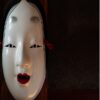You’re in a meeting with your Japanese colleagues.
An idea is proposed.
No one says they dislike it.
Everyone just sits there, quietly nodding.
The meeting ends.
And then, in private conversations later, you find out that absolutely no one liked the idea.
What just happened?
Why didn’t anyone just say so?
My friend, you have just failed to do the single most important thing in Japanese social life: Kuuki wo Yomu (空気を読む).
Literally, it means “to read the air.”
It’s an unspoken, unwritten, and unbelievably important social skill.
It’s a kind of sixth sense for navigating the complex web of Japanese human relationships.
And if you don’t understand it, you will always feel like an outsider.
The Unwritten Rulebook: What is “Kuuki wo Yomu” (Reading the Air)?
It’s a Social Superpower… and a Curse
“Reading the air” is the ability to understand the situation, and the feelings of others, without anyone needing to say anything directly.
It’s about sensing the mood of a room.
It’s about picking up on non-verbal cues, subtext, and what is not being said.
In a society that values harmony (Wa) above all else, being able to “read the air” is a superpower.
It allows people to avoid confrontation, prevent awkwardness, and make decisions smoothly as a group.
But it can also be a curse.
It can lead to immense pressure to conform, to suppress your own opinion (your Honne), and to follow the majority, even when you disagree.
Someone who cannot read the air is labeled “KY” (short for Kuuki ga Yomenai).
It’s a serious social insult.
It means you are dense, clueless, and socially inept.
How to Start Reading the Air
So, how can you, a visitor, learn this invisible skill?
It takes practice, but here are some starting points.
1. Observe, Observe, Observe: Before you speak, watch how others are reacting. Are they nodding politely (Tatemae) or leaning in with genuine interest? Is there a subtle, heavy silence in the room after someone speaks? The silence is often more important than the words.
2. The Power of the Group: Pay attention to the group dynamic. In Japan, the consensus of the group is often more important than the opinion of one individual. If you feel a decision is being made without everyone explicitly agreeing, it’s probably because the “air” has already been read and a silent consensus has been formed.
3. When in Doubt, Be Vague: If you’re not sure what the “air” is, it’s often safer to give a vague, non-committal response rather than a strong “yes” or “no.” This gives everyone time and space to navigate the situation without conflict.
My Advice: Learn in a Small Group Setting
Honestly, the best way to learn to read the air is by interacting with Japanese people in a relaxed, small-group setting.
A big bus tour won’t teach you this.
You need to be in a situation where you can observe subtle interactions up close.
This is why I often recommend small-group food tours or market tours with a local guide.
You get to share a meal, talk with the guide, and observe how they interact with shopkeepers and other locals.
It’s like a real-life lesson in Japanese communication.
You can see the “air” being read in real time.
It’s fascinating.
My Final Word: Don’t Stress Too Much
As a foreigner, you are not expected to be a master at reading the air.
In fact, you are often given a “gaikokujin pass” (a foreigner pass), allowing you to be more direct.
But making an effort to understand this concept will show a deep level of respect for the culture.
It shows that you are not just seeing the sights; you are trying to understand the people.
And that effort will be deeply appreciated.
You Might Also Like
“Reading the air” is all about understanding unspoken feelings.
This is deeply connected to the concept of “Honne and Tatemae,” the two “faces” of a Japanese person.
Honne & Tatemae: Cracking the Code of the Two Japanese “Faces”




